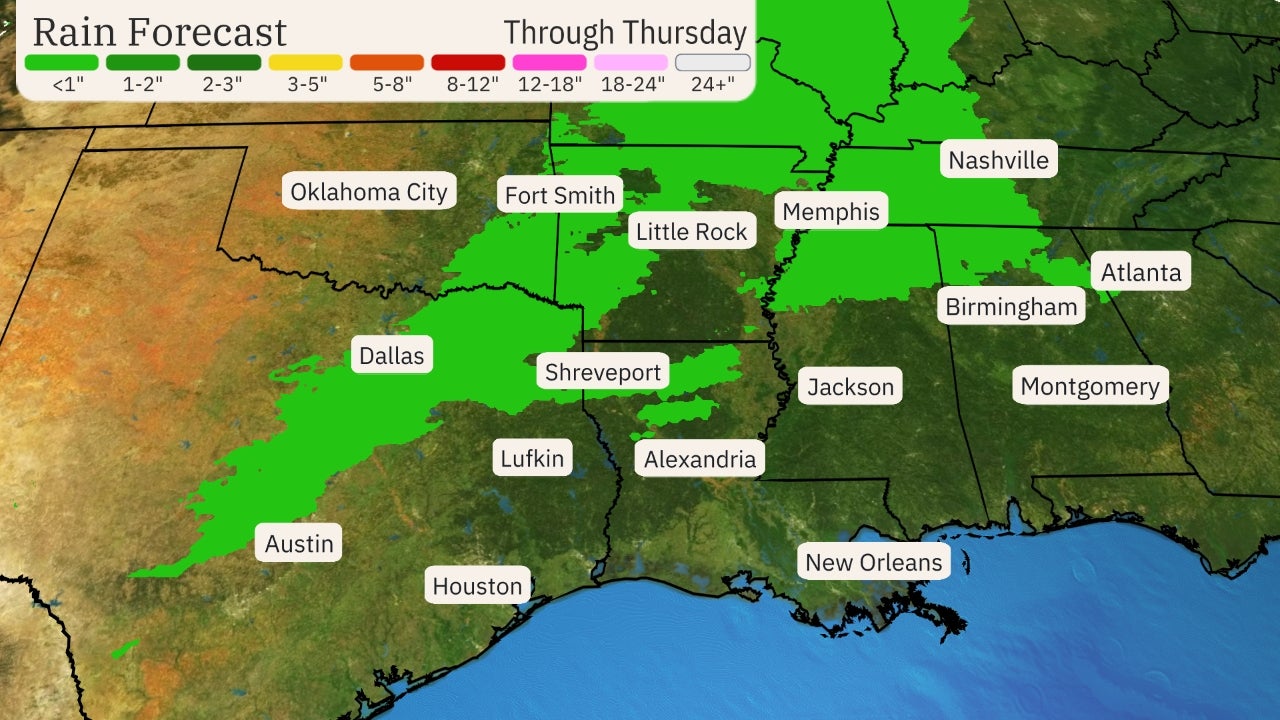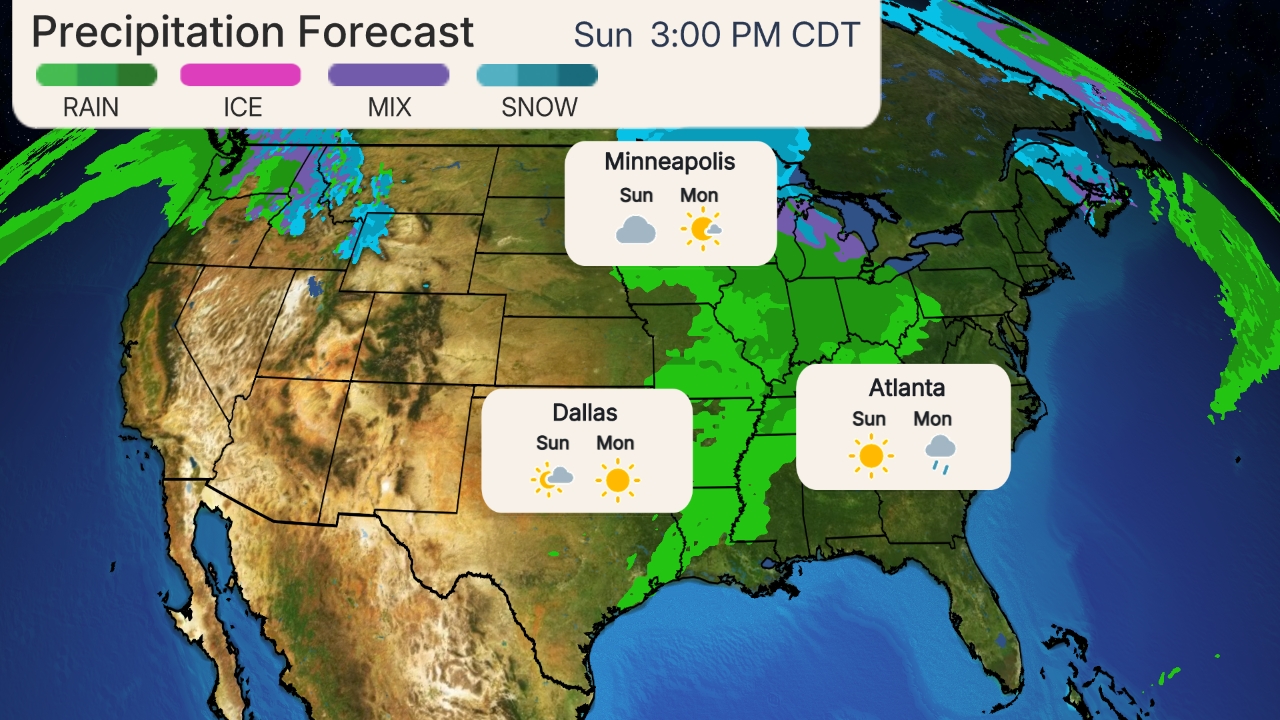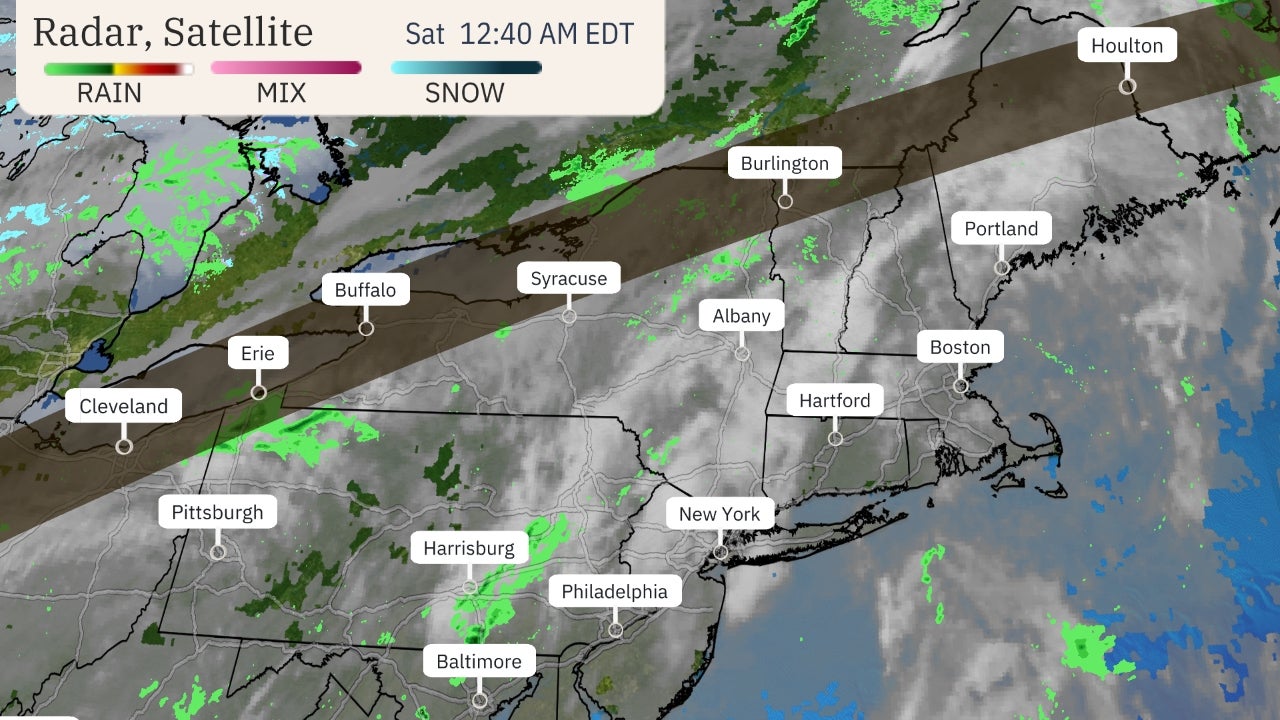Winter Storm Orlena is set to pummel the East Coast with heavy snow and strong winds expected from parts of New England to the northern mid-Atlantic, including the Boston, New York City and Philadelphia metro areas.
SPONSORED: Epic winter clearance sale at Sierra Trading Post
Here's a look at where the storm is now followed by the forecast for what's to come.
Latest Status
Snowfall will intensify as it moves northward from the mid-Atlantic states toward the New York City Tri-state through Sunday night and early Monday. However, some lingering dry air may keep most of southern New England dry for the time being.
Snow will also expand Sunday night in the Ohio Valley, extending as far south as Kentucky, Tennessee, and the Great Smoky Mountains, while coming to an end across the Upper Midwest.
(MORE: Orlena Cancels Flights, Causes Accidents)

Winter storm warnings and winter weather advisories are in effect from the Appalachians and mid-Atlantic states into New England. The worst winter conditions are generally expected in the areas under winter storm warnings.
 Winter Weather Alerts
Winter Weather AlertsOrlena will bring widespread moderate to major (locally extreme) impacts across the Northeast, as depicted below in the latest Winter Storm Severity Index from NOAA. The index takes into account snow, ice, wind, temperatures, location and population to determine the expected impact from a winter storm.
One of the expected impacts is that travel in the Northeast will be severely disrupted by the snow and strong winds from Orlena into Tuesday.
 Winter Storm Severity Index
Winter Storm Severity IndexForecast Timing
Monday
Monday will be the peak day of the storm in the Northeast.
Snow, likely heavy at times, is expected from southern New England to the New York City metro area and the northern mid-Atlantic states. The snow could change to rain or sleet for a time near the immediate coast from southeast New England to portions of Long Island and southern New Jersey.
There may also dry air several thousand feet above the ground, known to meteorologists as the "dry slot," that could take away at least a few hours of heavier precipitation wherever it tracks.
Lingering snow is also expected in parts of the Ohio Valley and the Appalachians on Monday.
Monday night, that heavier snow is expected to spread farther north into New England and into parts of upstate and central New York, but may continue in parts of the northern mid-Atlantic states.
Strong winds will buffet the Northeast coast Monday and Monday night. Near-blizzard conditions cannot be ruled out where heavier snow overlaps with stronger winds, possibly including parts of the New York City metro area.
SPONSORED: Epic winter clearance sale at Sierra Trading Post
 Monday's Forecast
Monday's ForecastTuesday
The best chance of snow continuing into Groundhog Day will be in New England, but some lighter snow may linger as far west as central New York and as far south as New Jersey or the Delmarva Peninsula.
Some snow showers can't be ruled out in the Appalachians.
Snow could linger in these areas Tuesday night or even Wednesday.
 Tuesday's Forecast
Tuesday's ForecastSnow Forecast
Widespread, heavy snowfall totals are forecast throughout parts of the Interstate 95 corridor from southeast Pennsylvania to New York City and New England.
Some areas south or east of Interstate 95 could see rain or sleet mix in for a time. Therefore, there could be very large differences in snowfall over short distances across the following areas:
-From the north and west suburbs to the south shore in the Boston metro area.
-From southeast Pennsylvania to southern New Jersey.
-From eastern Long Island to New York City, northern New Jersey and the Lower Hudson Valley.
Heavy snowfall is possible in purple areas in the map below and most likely in the darkest purple contours. Widespread totals of 6 to 12 inches are expected in these areas. Some of the locations shaded in darkest purple or pink could pick up 1 to 2 feet of snow, including from eastern Pennsylvania to northern New Jersey and southeast New York.
This heavy snow threat includes all or parts of the Boston, Hartford, New York City and Philadelphia metro areas.
 Additional Snowfall Forecast
Additional Snowfall ForecastWind, Coastal Flood Impacts
Snow won't be the only impact.
Strong winds are likely to develop along the coast from the Delmarva Peninsula to coastal New England Monday and could last along the New England coast into Tuesday.

Strong north to northwest winds could develop over the interior Northeast, Appalachians and piedmont of Virginia and North Carolina Tuesday and linger in parts of the Northeast into Wednesday.
Winds could lead to power outages and possibly some tree damage, particularly if they occur in areas of heavy accumulated snow.
Given the storm's slow movement and persistent onshore winds, coastal flooding may occur from the Delmarva Peninsula to New England.
The National Weather Service has issued coastal flood alerts along parts of the East Coast.

The high tides of most concern for coastal flooding along the New Jersey shore are late Monday morning, late Monday night and late Tuesday morning.
Moderate to locally major coastal flooding is possible Monday night in southern and eastern parts of Long Island.
At Boston Harbor, high tides of concern are just after midnight Tuesday morning and again early Tuesday afternoon.
The National Weather Service expects mainly minor to moderate coastal flooding at high tide Waves may lead to beach and dune erosion in some areas.
Check weather.com for updates to this forecast.
Orlena's History
Orlena began its cross-country journey in California last week and then tracked into the Midwest over the weekend.
It wrung out feet of snow in California's Sierra Nevada and other parts of the West. For full details, click here.
In the Midwest, Chicago's O'Hare airport had picked up 8.8 inches of snowfall as of early Sunday afternoon.
More than a half-foot of snow fell across the Milwaukee metro area and northern Indiana.
Below is a general look at the estimated snowfall that Orlena has produced since Saturday.
 Estimated Snowfall
Estimated SnowfallThe Weather Company’s primary journalistic mission is to report on breaking weather news, the environment and the importance of science to our lives. This story does not necessarily represent the position of our parent company, IBM.
The Weather Company’s primary journalistic mission is to report on breaking weather news, the environment and the importance of science to our lives. This story does not necessarily represent the position of our parent company, IBM.

No comments:
Post a Comment